Search
Did you mean: Kali?
Remove Ads
Advertisement
Summary 
Loading AI-generated summary based on World History Encyclopedia articles ...
Search Results
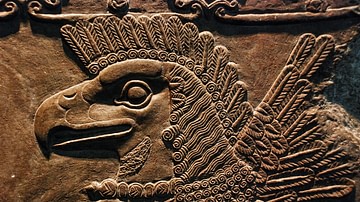
Definition
Kalhu / Nimrud
Kalhu (also known as Caleh, Calah, and Nimrud, in modern-day northern Iraq) was a city in ancient Mesopotamia that became the capital of the Assyrian Empire under Ashurnasirpal II (r. 884-859 BCE) who moved the central government there from...
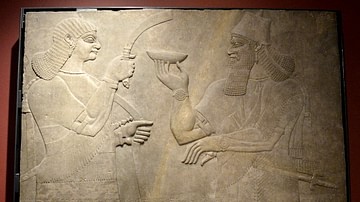
Article
The Greatest Party Ever Thrown: Ashurnasirpal II’s Kalhu Festival
The greatest party ever thrown in antiquity is the inaugral event thrown by Ashurnasirpal II (r. 884-859 BCE) in 879 BCE at the completion of his new city of Kalhu which was attended by almost 70,000 people who were served, among other treats...
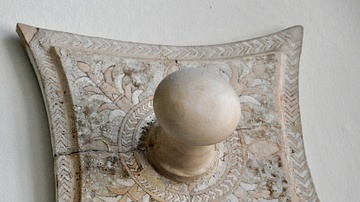
Image
Decorative Wall Tile from Kalhu
This tile once decorated one of the walls of the North-West palace at the ancient city of Kalhu. 9th century BCE. From Nimrud (Kalhu), Mesopotamia, modern-day Iraq. (Pergamon Museum, Berlin)
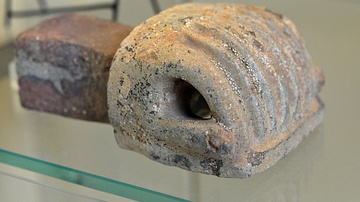
Image
Decorative Wall Console, Kalhu
A decorative wall console in the form of clenched hand. The surface is not inscribed. Similar "Hands of Ishtar" were found in Kalhu of Mesopotamia, which were used as corbels but these were inscribed. 9th to 7th century BCE. From Sam'al/Zincirli...
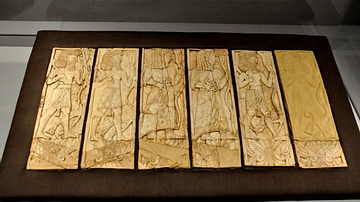
Image
Ivory Plaque from Nimrud (Ancient Kalhu)
This ivory plaque depicts six Assyrian worshippers in procession in six vertical rectangles. Note the details of their dresses. The men are bare-chested and wear kilts while the women wear a full dress. Both genders wear an impressive belt...
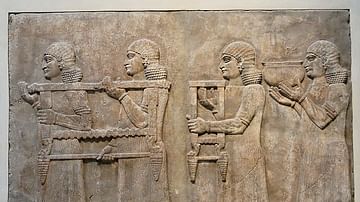
Definition
Dur-Sharrukin
Dur-Sharrukin (modern Khorsabad, Iraq) was a city built by Sargon II of Assyria (r. 722-705 BCE) as his new capital between 717-706 BCE. The name means Fortress of Sargon and the building project became the king's near obsession as soon as...
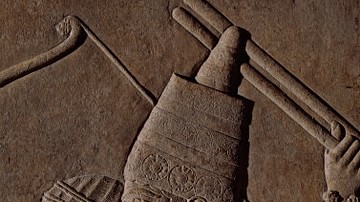
Definition
Ashur
Ashur (also known as Assur) was an Assyrian city located on a plateau above the Tigris River in Mesopotamia (today known as Qalat Sherqat, northern Iraq). The city was an important center of trade, as it lay squarely on a caravan trade route...
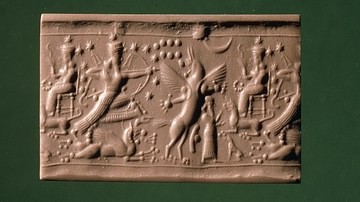
Definition
Ninurta
Ninurta (identified with Ningirsu, Pabilsag, and the biblical Nimrod) is the Sumerian and Akkadian hero-god of war, hunting, and the south wind. He first appears in texts in the early 3rd millennium BCE as an agricultural god and local deity...

Definition
Sargon II
Sargon II (r. 722-705 BCE) was one of the most important kings of the Neo-Assyrian Empire as founder of the Sargonid Dynasty which would rule the empire for the next century until its fall. He was a great military leader, tactician, patron...
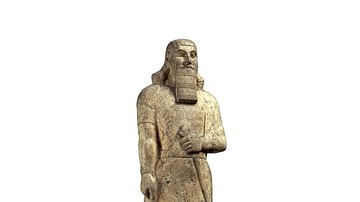
Definition
Ashurnasirpal II
Ashurnasirpal II (r. 884-859 BCE) was the third king of the Neo-Assyrian Empire. His father was Tukulti-Ninurta II (r. 891-884 BCE) whose military campaigns throughout the region provided his son with a sizeable empire and the resources to...